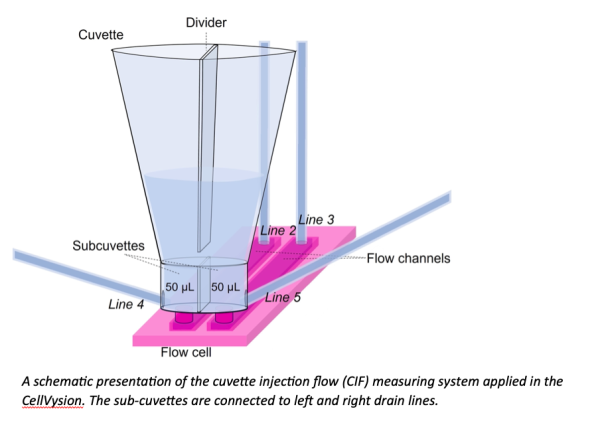Gradient fluidics
To simplify experimental design, proprietary fluidics has been developed.
The proprietary fluidics, cuvette injection flow (CIF), of the SPR imager of Vysens enables to inject samples directly from a cuvette which is placed on top of a two-channel flow cell. Without applying an air bubble to separate the running buffer from the sample the analyte can be injected instantly into the flow chamber without delay. Large particles, e.g. cells can be injected without clogging the fluidics. The position of the optics allows to apply sedimentation of the cells. In order to keep the sample volume low e.g. 50 µl back and forth flow is applied to reduce the sample volume while association times can be e.g. half an hour. The CIF is applied to generate the ligand density gradient in both flow channels.
